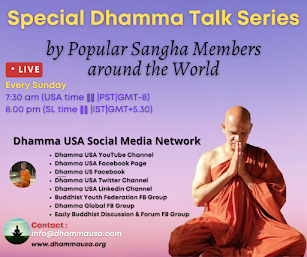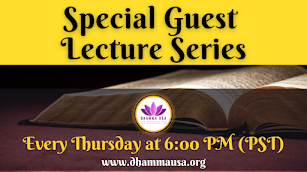Topic: Unity in Diversity

The world is full of diversity. Diversity brings about a hope and beauty to lives. Yet, it is also paradoxical to see the very diversity has been the source of conflict at times. When carefully examined it is revealed that it is never the diversity but the misreading of diversity causes conflict and dissensions. However, one needs to have a broad mind (wisdom) and warm-heartedness (compassion) to acknowledge and appreciate the differences and live a harmonious life. Therefore, how we see and interpret the differences truly matter.
References:
1. Biological Differences
 The most popular and widespread view on human and non-human biology is of theistic origin, which is the Judeo-Christian ideology of evolution admitted in the Book of Genesis. Accordingly, the differences have to do with the will of The Creator and therefore are beyond human affairs. What humans have to do is just to accept it passively. The most outstanding negative outcome of this type of creation theory with regard to the diversity is that it is pre-deterministic and fatalistic and therefore, disenfranchises us from exercising freewill. The other issue with regard to the theistic interpretations of diversity is that they try to establish socio-political hierarchy on biological differences. For instance, in the book of genesis, the superiority is given to the male and the women are given only an instrumental value and so are the other units of the universe including animals and the environment. They are all treated as secondary and inferior. In the Rig Veda literature of Hindus, the whole story of human evolution has been described in terms of divine creation in which not only the hierarchy even the respective roles and responsibilities of each social stratum have been defined and recommended.
The most popular and widespread view on human and non-human biology is of theistic origin, which is the Judeo-Christian ideology of evolution admitted in the Book of Genesis. Accordingly, the differences have to do with the will of The Creator and therefore are beyond human affairs. What humans have to do is just to accept it passively. The most outstanding negative outcome of this type of creation theory with regard to the diversity is that it is pre-deterministic and fatalistic and therefore, disenfranchises us from exercising freewill. The other issue with regard to the theistic interpretations of diversity is that they try to establish socio-political hierarchy on biological differences. For instance, in the book of genesis, the superiority is given to the male and the women are given only an instrumental value and so are the other units of the universe including animals and the environment. They are all treated as secondary and inferior. In the Rig Veda literature of Hindus, the whole story of human evolution has been described in terms of divine creation in which not only the hierarchy even the respective roles and responsibilities of each social stratum have been defined and recommended.
References:
- A detailed account of Buddhist analysis and refutation of pre-Buddhist divine ideologies about differences and diversity is found in the Vasettha Sutta of DN.
- Image reference
2, Gender differences
 The difference between the opposite genders has been misread and misinterpreted in the poetry, religion, and even in the philosophy. Throughout the history of humanity the women have suffered a lot and have been disenfranchised from their fundamental rights under the dominant patriarchal ideologies. For Buddhism the difference between male and female has more to do with one’s psychology than physicality. According to the Abhidhammic analysis of matter, the elements of masculinity and femininity are understood to be the matter(s) derived from mind. (Dhammāyatanapariyāpanna Rūpa).
The difference between the opposite genders has been misread and misinterpreted in the poetry, religion, and even in the philosophy. Throughout the history of humanity the women have suffered a lot and have been disenfranchised from their fundamental rights under the dominant patriarchal ideologies. For Buddhism the difference between male and female has more to do with one’s psychology than physicality. According to the Abhidhammic analysis of matter, the elements of masculinity and femininity are understood to be the matter(s) derived from mind. (Dhammāyatanapariyāpanna Rūpa).
In one of the Suttas of the Anguttara Nikaya there is an interesting analysis as to how the different gender identities are being formed based on one’s psychological proclivities and dispositions developed over time.
“ Bhikkhus, I will teach you a Dhamma exposition on union and disengagement. “ A woman, Bhikkhus, attends internally to her feminine faculty, her feminine comportment, her feminine appearance, her feminine aspect, her feminine desire, her feminine voice, and her feminine ornamentation. She becomes excited by these and takes delight in them. Excited by them, taking delight in them, she attends externally to man’s masculine faculty, his masculine comportment, his masculine appearance, his masculine aspect, his masculine desire, his masculine voice, and his masculine ornamentation. She becomes excited by these and takes delight in them. Excited by them, taking delight in them, she desires union externally, and she also desires the pleasure and joy that arise on account of such union. Beings who are delighted with their femininity enter upon union with men. It is in this way that a woman does not transcend her femininity
References:
- Anguttara Nikaya- The Numerical Discourses of the Buddha translated by Bhikkhu Bodhi; p. 1039-40).
- For more detail and the original text and translations read Samyoga Sutta
- Image reference
3. Karma in creating differences
Once a young householder called Subha came to the Buddha and asked for the reason, which leads to the differences observable among the human society.
Subha:
“Master Gotama, what is the cause and condition why human beings are seen to be inferior and superior? For people are seen to be short-lived and long-lived, sickly and healthy, ugly and beautiful, un-influential and influential, poor and wealthy, lowborn and highborn, stupid and wise. What is the cause and condition, Master Gotama, why human beings are seen to be inferior and superior?”
Buddha:
“Student, beings are owners of their actions, heirs of their actions; they originate from their actions, are bound to their actions, have their actions as their refuge. It is action that distinguishes beings as inferior and superior.”
Reference:
4. Personality differences
 People are of different levels of understanding. Their skills, competencies and potentials are different. This is what the Buddha observed immediately after his enlightenment. There the Budhha saw the world comparing it to a lotus pond in which lotuses are at different positions in terms of their potentials to be bloomed.
People are of different levels of understanding. Their skills, competencies and potentials are different. This is what the Buddha observed immediately after his enlightenment. There the Budhha saw the world comparing it to a lotus pond in which lotuses are at different positions in terms of their potentials to be bloomed.
Then the Lord, having understood Brahmā’s entreaty and, out of compassion for beings, surveyed the world with the eye of an awakened one. As the Lord was surveying the world with the eye of an awakened one, he saw beings with little dust in their eyes, with much dust in their eyes, with acute faculties, with dull faculties, of good dispositions, of bad dispositions, docile, indocile, few seeing fear in sins and the worlds beyond.
References:
- Ariyapariyesana Sutta (MN 26)
- Bodhirajakumara Sutta (MN 85)
- Mahavagga Pali of Vinaya Pitaka
- Image reference
 Even as in a pond of blue lotuses or in a pond of red lotuses or in a pond of white lotuses, a few blue or red or white lotuses are born in the water, grow in the water, do not rise above the water but thrive while altogether immersed; a few blue or red or white lotuses are born in the water, grow in the water and reach to the surface of the water; a few blue or red or white lotuses are born in the water, grow in the water, and stand up rising out of the water, undefiled by the water.
Even as in a pond of blue lotuses or in a pond of red lotuses or in a pond of white lotuses, a few blue or red or white lotuses are born in the water, grow in the water, do not rise above the water but thrive while altogether immersed; a few blue or red or white lotuses are born in the water, grow in the water and reach to the surface of the water; a few blue or red or white lotuses are born in the water, grow in the water, and stand up rising out of the water, undefiled by the water.
References:
- Mahavagga
- Majjhima Nikaya
- Skillful Means by John W. Shroeder
- Image reference
Even so, did the Lord, surveying the world with the eye of an awakened one, see beings with little dust in their eyes, with much dust in their eyes, with acute faculties, with dull faculties, of good dispositions, of bad dispositions, docile, indocile, few seeing fear in sins and the worlds beyond.
References:
- Mahāvaggapāli
- Majjhima Nikaya
- Ayacana Sutta of Samyutta Nikaya.
5. Buddha’s knowledge in reading the personality-differences of beings (Āsayānusaye Ñāna)
Of those who are capable in reading the potentials of the beings for enlightenment the Buddha was the foremost and claimed to have an incomparable wisdom in that regard. This form of knowledge is called “Āsayānusaye Ñāna” the knowledge about the psychological dispositions of each individual.
6. Diversity in spiritual psychology
Spiritual growth doesn’t come about overnight. It takes practice of many lifetimes. Therefore, the spiritual maturity varies from individual to individual. When it comes to “spiritual maturity” Buddhism reckons it in terms of five inner faculties. They are:
- Saddhā - Confidence
- Viriya – Effort
- Sati – Mindfulness
- Samādhi – Mental Composure
- Paññā – Knowledge
If the individual has gone through a considerable amount of practice and have sharpened the above faculties they are of great potential to be enlightened with no delay.
Reference:
7. Meditation subjects matching different personalities (Kammatthāna Niddesa of Visuddhi Magga)
Buddhism identifies following six temperaments and would prescribe meditation subjects to each character accordingly.
- Lust dominant temperament
- Anger dominant temperament
- Delusion dominant temperament
- Devotion dominant temperament
- Intelligence dominant temperament
- Perplexity dominant temperament
- Vijitha Moragaswewa on An Inquiry into the Concept of Personality from the Buddhist Perspective.
- Visuddhimagga translated by Bhikkhu Nanamoli
8. Personality Differences among Arahantas
It is noteworthy that the personality differences are seen even among Arahantas (enlightened disciples). This becomes clear when we see the Buddha proclaiming certain Arahantas to be the foremost of identified field depending on their personality traits. For instance, venerable Sāriputta is identified to be the foremost of knowledge whereas venerable Moggallana is identified to be the foremost of psychic powers. There are eighty such disciples with different personality traits.
References:
- Anguttara Nikaya Etadagga Pali.
- image reference
(Remodeled from the article by Ven. Kirinde Chandanada)

































0 comments:
Post a Comment
Your comments and feedback are very helpful to us in improving our posts. We really appreciate your time. Thank you!
Dhamma USA Team.